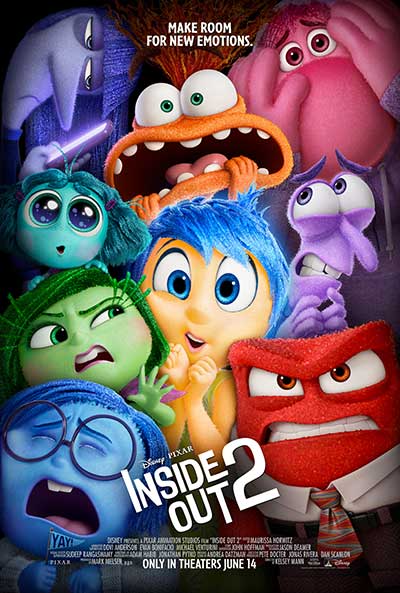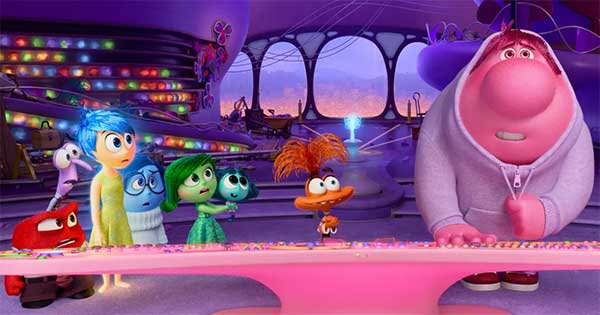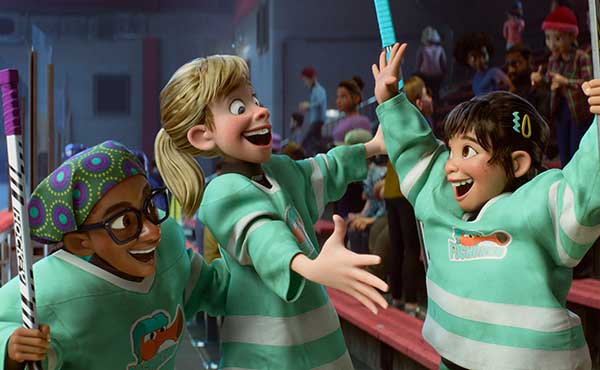
By Mariela Angella Oladive
At one point, I was like Riley. Watching the movie sequel at 24, I realized I am still Riley, but no longer a child entering puberty. Instead, I am a young adult facing life’s realities.
Sitting in front of the cinema screen, I found myself engrossed in Riley Anderson’s world once again. This time, I was no longer the child or teenager who watched the first “Inside Out” movie.
“Inside Out 2,” Pixar’s sequel to its 2015 hit, continues to explore the complexities of human emotions through its original characters—Joy, Sadness, Anger, Disgust, and Fear.
This time, it introduces new emotions: Anxiety, Embarrassment, Envy, and Ennui, as Riley transitions from childhood to puberty. The sequel brings to light the sudden and often overwhelming arrival of these new emotions, symbolized by the demolition of Riley’s emotional headquarters, making room for these unexpected tenants and reshaping her emotional structure.
The sequel hit Philippine cinemas on June 12, coinciding with the graduation season—a significant transition period for many young people, making the film’s themes even more resonant.

Through a Psychological Lens
“Inside Out 2” not only continues Riley Anderson’s journey but also delves deeper into the psychological development that accompanies the transition from childhood to puberty. Using a blend of animation and storytelling, Pixar masterfully captures the internal emotional struggles that many young people face.
From a psychoanalytic perspective, the introduction of new emotions represents the complex interplay between the id, ego, and superego. Anxiety, Embarrassment, Envy, and Ennui are not just additions to Riley’s emotional repertoire but signify the nuanced development of her psyche as she grapples with new social and personal challenges.
The film’s narrative aligns with Erik Erikson’s stages of psychosocial development, particularly focusing on the stage of “industry vs. inferiority” and the emerging “identity vs. role confusion,” which begins in puberty. Riley’s journey portrays the universal struggle of forming a coherent identity amidst a flood of new and often conflicting emotions.
Mental Health
In a society where mental health issues are increasingly prevalent among young people, “Inside Out 2” serves as an important piece. It highlights the often-overlooked emotional turbulence that accompanies the transition into puberty.
By personifying emotions like Anxiety and Ennui, Pixar opens up a dialogue about the importance of acknowledging and addressing mental health struggles.
Riley’s fear of being left out leads to her betraying her friends, a common experience among teenagers desperate to fit in and avoid loneliness. This fear-driven behavior highlights the intense social pressures adolescents face, often exacerbated by social media and peer influence.
However, Riley’s journey towards self-affirmation and character development offers a hopeful message. By the end, Riley learns to embrace her emotions and repair her relationships, showing growth.
Additionally, the film portrays Riley’s parents as supportive and open, exhibiting a level of understanding crucial in real-life parent-teen dynamics. Their openness mirrors the ideal approach parents can take to help their children navigate puberty’s challenges. This aspect underscores the importance of a supportive family environment in fostering teenagers’ emotional well-being.

Graduation and Transition
The release of “Inside Out 2” during the Philippine graduation season adds an additional layer of significance to its themes. Graduation marks the end of one chapter and the beginning of another. It is a time of celebration but also a period filled with uncertainty and anxiety about the future.
For many young people, graduation signifies the transition from the familiar structure of school to the unknown terrain of higher education or the workforce. This transition mirrors Riley’s emotional journey as she navigates the upheaval of puberty. Just as Riley must make room for new emotions, graduates must adapt to new responsibilities and expectations.
I watched “Inside Out 2” with my brother, who is three years younger than me, and our post-movie discussion highlighted this connection. When I asked him which emotions he related to the most, he said Anxiety. He shared his concerns about life after college, particularly the fear of not landing a job immediately and the pressure of handling job interviews.
Graduates often face pressure to succeed, make important life decisions, and live up to their own and others’ expectations. Riley’s internal struggles offer a relatable narrative for those experiencing similar feelings during their transition from one stage of life to another.
Universal Theme
At its core, “Inside Out 2” continues to explore the universal theme of emotional growth and self-discovery. It emphasizes that emotions, whether positive or negative, are integral to our identity and personal development. The film teaches us that it’s okay to feel overwhelmed, anxious, or envious—these emotions are part of the human experience and contribute to our growth.
Pixar’s sequel beautifully illustrates that growing up is not just about physical changes but the emotional evolution that shapes who we become. The demolition and reconstruction of Riley’s emotional headquarters symbolize the constant flux and adaptation necessary for personal development.
Through its insightful portrayal of emotions, “Inside Out 2” resonates deeply with anyone experiencing life stages, making it a timeless piece that will continue to touch hearts and minds across generations.






















